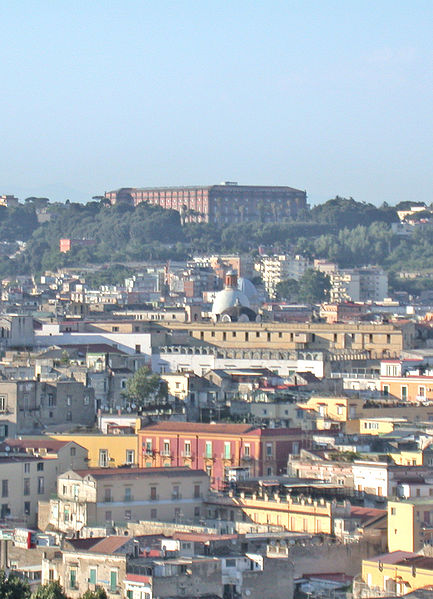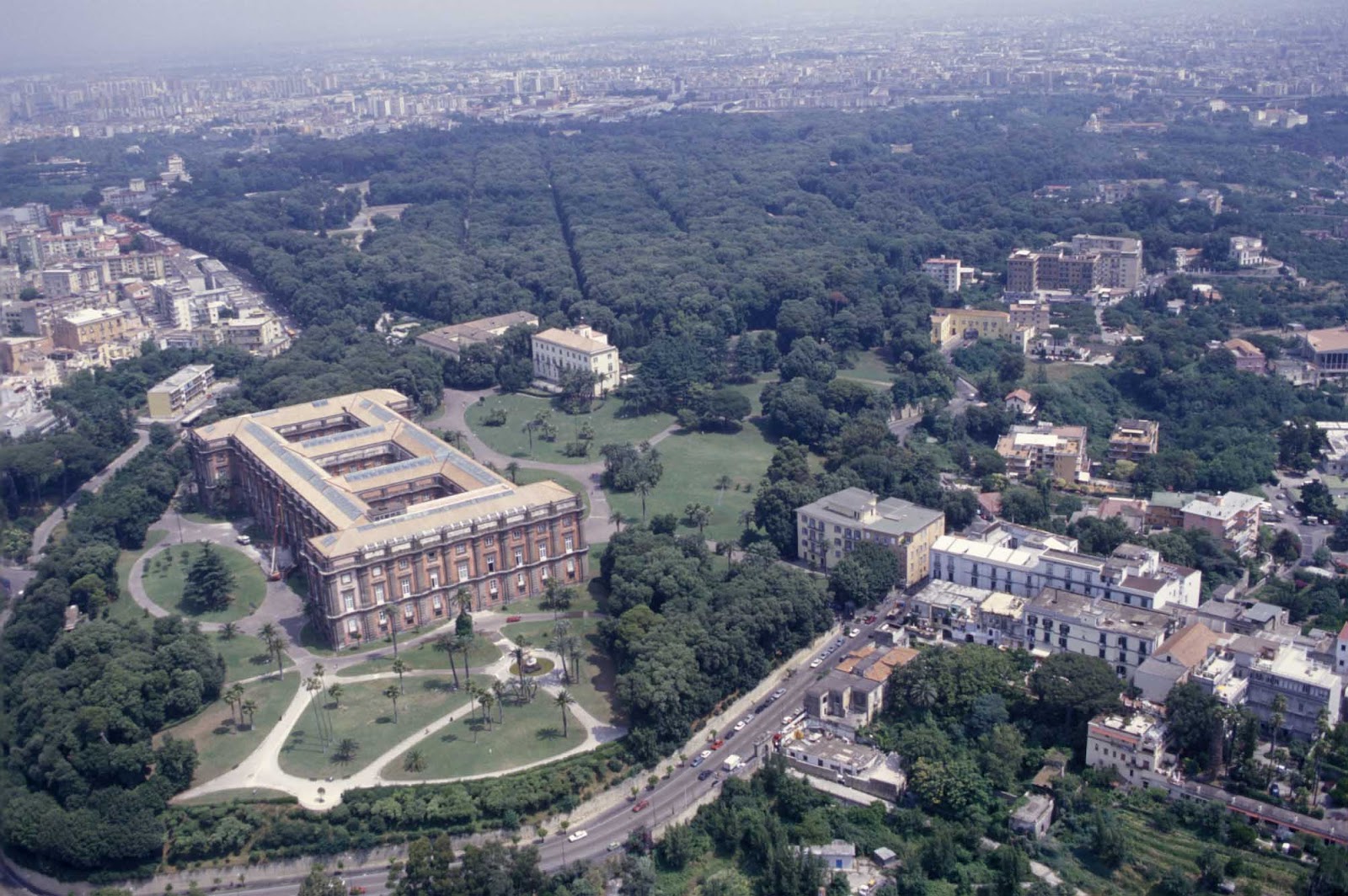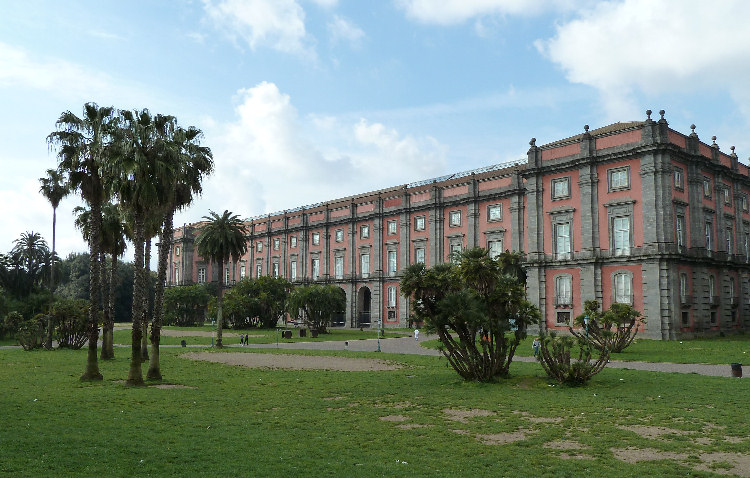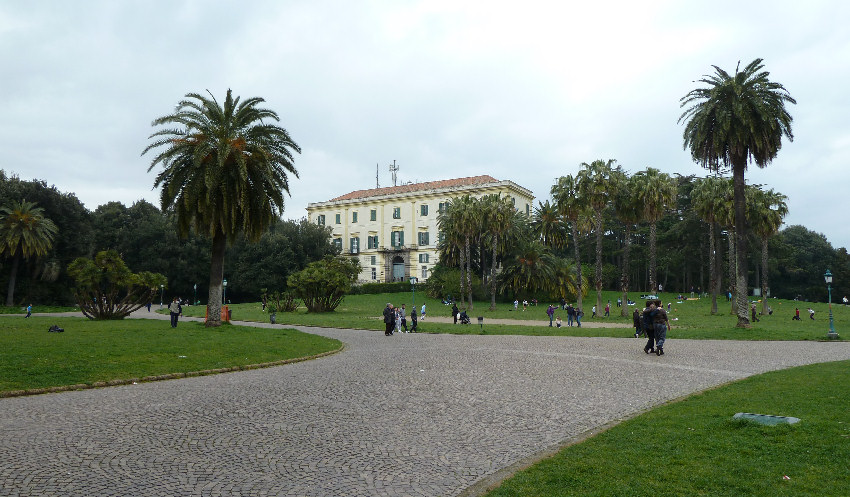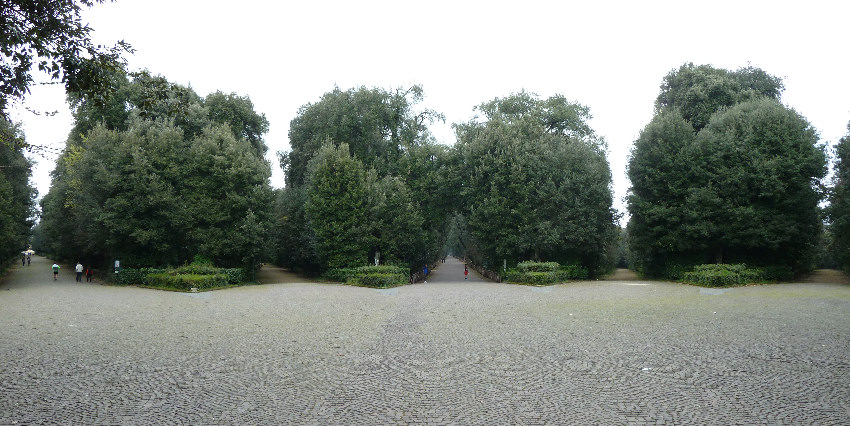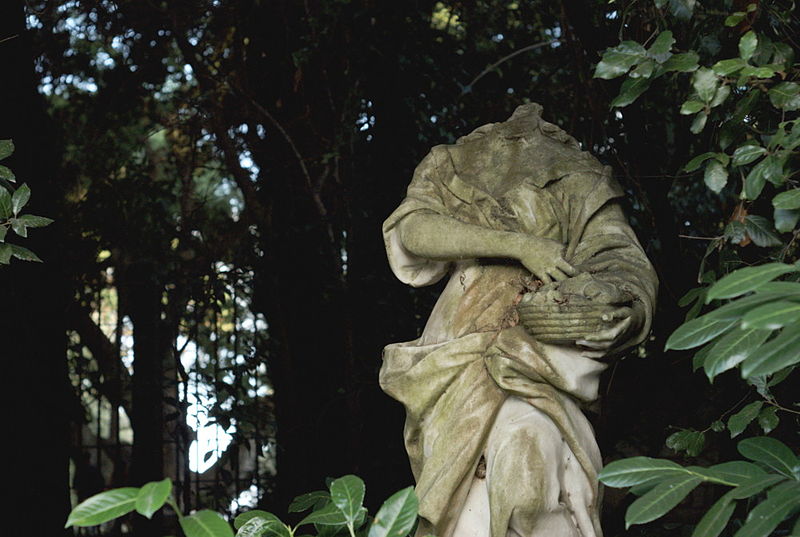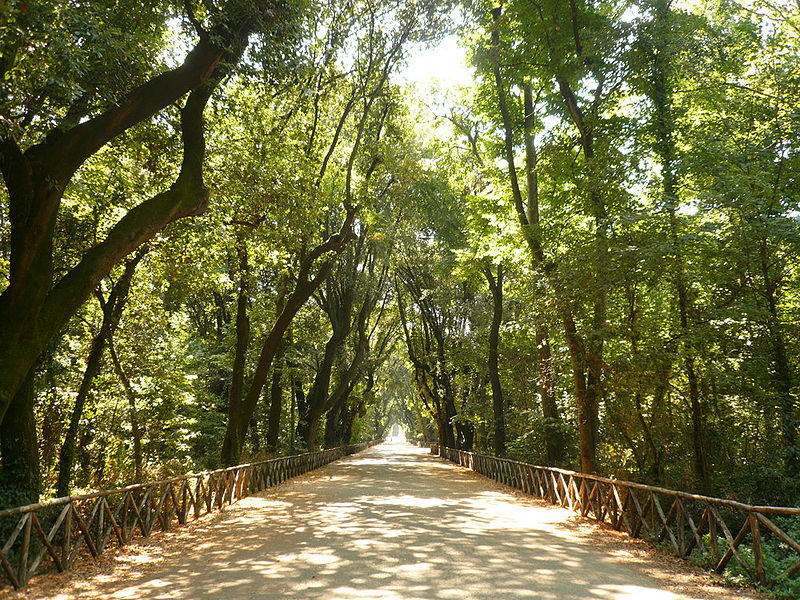
Parco di Capodimonte/Museo e Bosco di Capodimonte
This post is also available in:
 Italiano (Italian)
Italiano (Italian)
Capodimonte Park (already royal wood of Capodimonte) is the widest public park of the city of Naples. It has an extension of 134 hectares with about 400 vegetal specimens divided into 108 families and 274 types. The wood belongs to a hunting mansion which became the royal palace of Capodimonte in 1738, nowadays it is completely dedicated to its role as museum. The exhibition occupies the first three floors of the building with the historic state apartments and a rich Farnesian collection on the first floor; a gallery with Neapolitan works from 1200 to 1700 is located on the second floor; while the third floor is dedicated to a collection of works of contemporary art from the 19th century. 16 architectures between residences, brothels, manufacturing industries, statues, fountains, storages, graveyards, orchards of the Cappuccini dell’Eremo and churches are located inside the park’s perimeter.
The wood was desired by Charles III of Bourbon in 1734 and it was initially destined to become a hunting reserve, but king Ferdinand II transformed it in an English style garden giving to the park its actual aspect. The botanist Dehnardt was the designer of the garden and he transformed it during the half of the 19th century by enriching new exotic tree species. The access to the park is located at Porta di Mezzo which leads to a great hemicycle, from where five paths start developing themselves into crossroads (more than 100 paths). Naturalistic scenarios do not lack in a real forest where the vegetal areas were functional to the different types of hunting practiced by the king, because of this there are zones with olm oaks, chestnut trees, horn beams and elms, while in others there are Myrtus communis, Ligustrum vulgare and Prunus laurocerasus. An interesting environment of the park is the “Casino della Regina” with its precious 18th century, walled up garden, of which remains only the citrus collection. The “Giardino dei Principi” has been better safeguarded; it was modified around 1840 by Dehnhardt who introduced palms in the pasture in front of Casino dei Principi.
The complex has been recently recovered thanks to an accurate refurbishment of the architectural and vegetal implant, after all the destructions it was subjected to during and after the war.
THE PLANTS
Nowadays, it is possible to observe in the park many specimens of Phoenix canariensis, Washingtonia, groups of Phoenix reclinata, of Chamaerops humilis and only single specimens of Cycas revoluta, Butia capitata and Livinstona chinensis. The complex called Fabbricato Torre, which includes garden areas destined to different uses, is located next to Porta di Santa Maria dei Monti. It has been divided in different independent sections since the 18th century: “Giardino della Fruttiera” for the production of refined fruit destined to the “Mensa del Re”; “Giardino dei Fiori” where pineapples and numerous flower varieties are cultivated; “Giardino della Purpignera” for the reproduction of pineapples and horticultural crops; “Giardino della Fruttiera di basso” which is a nursery.
In addition, there are typical species of the Mediterranean scrub such as in the case of the San Gennaro valley: a narrow gullet on the eastern side of the principle alley, which cuts lengthwise the northern area of the forest, in which the prevalent species are chestnut trees (Castanea sativa) and mountain maple trees (Acer pseudoplatanus), which flank olm oaks (Quercus ilex). There are also hazelnut trees (Corylus avellana), Carpinus betulus and downy oaks (Quercus pubescens). The undergrowth is formed by numerous plants common to other valleys like Ruscus aculeatus and certain fern species in wet areas. The access to one of the most sujjestive paths of the park is at “Stradone dell’Eremo” and it leads to the bottom of the vallet on a road flanked by Pinus nigra and firs which are the last survaiving specimens of an implant of 1834.
This post is also available in:
 Italiano (Italian)
Italiano (Italian)
Contatti
Via Miano, 4 - Napoli(NA)
081 7410080
info@boscodicapodimonte.it
http://www.boscodicapodimonte.it
Altre info
Ingresso gratuito
Aperto tutto l'anno, chiuso Lunedì in Albis
Aperto dalle 7:45 a un'ora prima del tramonto
